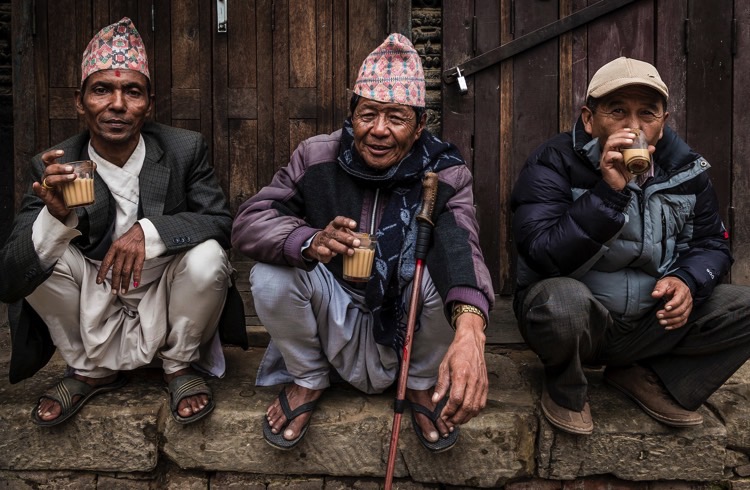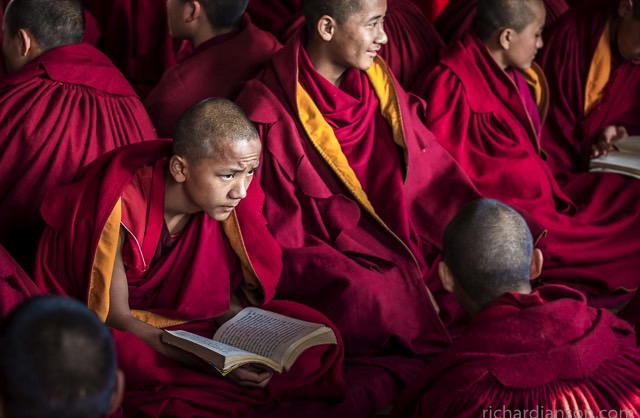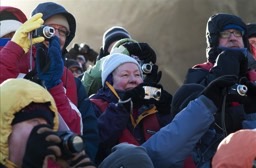Pro Photography Tips: How to Take a Great Portrait
What’s the secret to capturing strong, well-lit, well-composed close-ups? Pro photographer, and our Travel Photography Scholarship mentor, Richard I’Anson shares his top tips.
Shares
 Photo © Richard I'Anson
Photo © Richard I'Anson
- Know your camera gear
- Have a plan for your shoot
- Always ask before shooting
- Expose your subject's face
- Keep the image sharp
- Share your work
There is more to taking a great portrait of someone you meet when traveling, than pointing and shooting. For starters, you need to have good manners, and you need to know your gear back to front.
Know your camera gear
To start with, ensure you’re completely comfortable with your equipment. A good way to miss people's photos is to start messing around with gear and settings in front of them.
People quickly become self-conscious and often stop what they’re doing and go into their ‘camera pose’. It’s important to develop techniques that make photographing people easier and minimize the intrusion into your subject’s day.
Have a plan for your shoot
Always plan the shot before you approach your subject. Think about your composition and make sure you’ve got the right lens on the camera. Should it be horizontal or vertical?
Have an idea of the viewpoint you intend to use. Study the light on the person’s face and check where it’s coming from; this will allow you to position yourself correctly in the first instance.
Avoid backgrounds that are too busy or have very light or very dark patches of color. Your eyes should not be distracted from the subject’s face. Always focus on the eyes. It doesn’t matter if other features are out of focus: if the eyes aren’t sharp the image will fail.
Always ask before shooting
To shoot people pictures, for really good images, you’ve got to be prepared to get close to your subjects.
Standing at a distance with a long lens will rarely result in pleasing images, as you generally won’t be able to fill the frame with your subject, and these kinds of shots usually look as though you’ve tried to “sneak” them – which you have. It's polite to ask permission before taking anyone's photo.
Some photographers ask before shooting portraits, others don’t. It’s a personal decision, often decided on a case-by-case basis. (I always ask first, I see it as a common courtesy).
Asking permission allows you to use the ideal lens, get close enough to fill the frame, provides the opportunity to take several shots, as well as to communicate with your subject if necessary. It also means you know you’re not photographing someone against their wishes. Asking for permission may lead to a refusal, which can be disappointing but should be accepted with good grace.
How you approach people will affect the outcome of your request for a photo. Simply smiling and holding your camera up is usually sufficient to get your intention across.
Approach the person with confidence and a smile. When you get the go-ahead, shoot quickly. You’ll increase the possibility of capturing more spontaneous and natural images.
If you’re hesitant about approaching strangers, a good way to get started is to photograph people who provide goods or services to you. After buying something from a market stall, ask the person if you can take their photo. Very rarely will they refuse.
Expose your subject’s face
The face is the most important part of the composition. The ideal focal-length lens for shooting portraits is between 80mm and 105mm. Lenses in this range are often called portrait lenses because of the flattering perspective they give to the face. They also allow you to fill the frame with a head-and-shoulder composition while working at a comfortable distance from your subject.

Keep the image sharp
Set your shutter speed to at least 1/125 to prevent movement resulting in blurry photos. Selecting a wide aperture (f2–f5.6) will ensure that the background is out of focus and minimize distracting elements. Or select a small aperture (f8-16) if you want your subject and their environment to be rendered sharply. In low-light situations, increase the sensor’s ISO rating rather than use the flash.
Share your work
Finally, showing your subject the results on the camera’s LCD screen is a great way to say thank you and, assuming you’ve taken a flattering photo, leave them with a positive memory of their encounter with you.
People often ask for a photo to be sent to them. This is simple enough if they have an email address, but if you promise to send a photo make sure you’re committed to following up. It’s easy to collect contact details but getting around to sending them once your back home is much harder to do.
Related articles
Simple and flexible travel insurance
You can buy at home or while traveling, and claim online from anywhere in the world. With 150+ adventure activities covered and 24/7 emergency assistance.
Get a quote

3 Comments
Hi mr. Richard thank you for the tips. Can i ask something iam not a pro photographer. I just like photography and hope to be a good pro photographer. But i learn by my self. Truthly i dont understand much about photography. Can i apply for schoolarship for japan trip too. Or this only for photographer.and thank you so much for the feed back.
Hi mr. Richard thank you for the tips. Can i ask something iam not a pro photographer. I just like photography and hope to be a good pro photographer. But i learn by my self. Truthly i dont understand much about photography. Can i apply for schoolarship for japan trip too. Or this only for photographer.and thank you so much for the feed back.
Capture the feeling of the person reflected in your face, is professional work